SHAOLIN WAHNAM IN THE 1980s
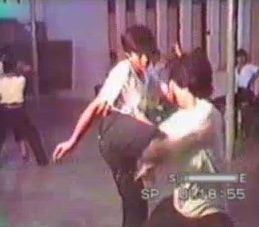
Four-Gates Sparring
Sifu Robin Gamble managed to retrieve some old videos from Dan who in turn got them earlier from Grandmaster Wong. But Grandmaster Wong does not have the videos now. Hence it is like recovering some lost treasure. The videos were originally in VHS format, and Sifu Robin converted them into the present digital format. We wish to thank Sifu Robin for recovering the treasure.
First Shaolin Wahnam Standardized Test 1983, Sungai Petani
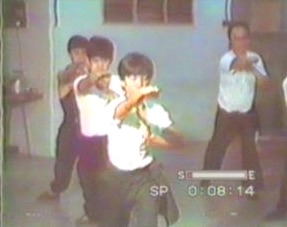
The first Shaolin Wahnam Standardized Test was held in 1983(?) at the Shaolin Wahnam Association in Sungai Petani, Malaysia, one year after the formation of the association. The test consisted of four parts, covering the four aspects of Shaolin Kungfu, namely form, force, application and philosophy.
Click First Standardized Test to enter
Shaolin Thirty Six Specific Techniques
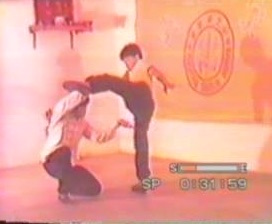
These 36 specific techniques are combat applications of 36 basic patterns, including the patterns from the One-Finger Shooting Zen set. Each technique is meant to meet one specific combat situation, like a mid-level punch or a felling attack.
Click 36 Specific Techniques to enter
Taming the Tiger
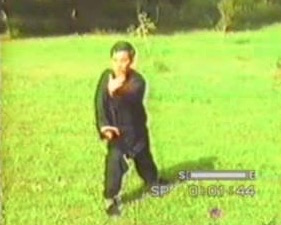
"Taming the Tiger" is a Southern Shaolin kungfu set, made famous by the great Shaolin Grandmaster Lam Sai Weng. This video was recorded in the 1980s in Bendigo, Australia during Grandmaster Wong's visit. Even during his oversea tour, Grandmaster Wong kept up his daily training. The recording began just after the initial Shaolin greeting, and completed just before the Shaolin greeting at the end.
Click Taming the Tiger to enter
From Specific Techniques to Free Sparring
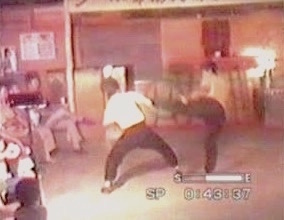
How did the early students of Grandmaster Wong in the 1980s spar? Of course they sparred using kungfu stances and kungfu techniques like what the present Shaolin Wahnam students do. It was also like what Shaolin practitioners in the past did.
Click Free Sparring to enter
Free Sparring in Shaolin Wahnam in the 1980s
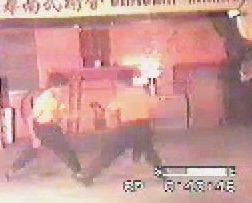
Free sparring is an essential aspect in kungfu training. It is never meant to teach students how to fight, but to confirm or test whether they can fight. The free sparring shown in this video clip was between Lek Poh and Kok San, two of Grandmaster Wong's students in Malaysia. The video was taken more than 20 years ago. None of the movements were pre-arranged. Notice that the patterns used by Shaolin Wahnam students now in sparring are similar to what were used more than 20 years ago.
Click Free Sparring to enter
12 Shaolin Combat Sequences of the 1980s
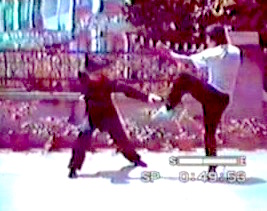
Grandmaster Wong employed these 12 Shaolin combat sequences in his sparring methodology in Shaolin Wahnam Association in Sungai Petani in the 1980s. They were later improved upon to form our present 16 fundamental Shaolin combat sequences.
Click Shaolin Combat Sequences to enter
Taijiquan Combat Sequences in the 1980s!
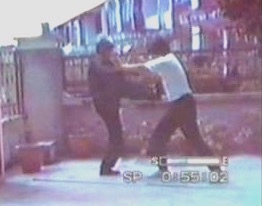
Wahnam Taijiquan practitioners would be happy to know that our first Taijiquan combat sequences were already in existence in the 1980s.
Click Taijiquan Combat Sequences to enter
Green Dragon Crescent Moon Knife
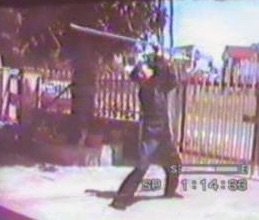
This is a famous Guan Dao set known as Green Dragon Crescent Moon Knife from Uncle Righteousness lineage. Guan Dao (Kuan Tou in Cantonese) is named after Guan Yu, a great warrior of the Three-Kingdom Period in Chinese warring history. Guan Yu is now worshipped as the God of Righteousness.
Click Guan Dao to enter
Bodhidharma Crescent-Moon Spade

Bodhidharma, the First Patriarch of the Shaolin Arts, is reputed to use a spade as a weapon. A famous expert of the Crescent-Moon Spade was Sha Seng, or Shark-Monk. who was the sidai (junior brother) of the Monkey Gody, The Crescent-Moon Spade here was performed by Ah Keat in the 1980s.
Click Crescent-Moon Spade to enter
Shaolin Plum Flower Sabre
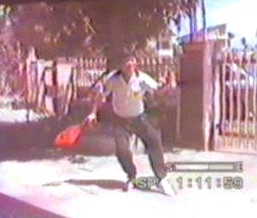
It is worthwhile to remember that a sabre, or single knife, is different from a sword. A kungfu saying describes a saber as a tiger whereas a sword is like a phoenix, although our Shaolin sword is more like a dragon. This Plum Flower Sabre Set was performed by Sifu Goh Kok Hin, Grandmaster Wong’s senior disciple, in the 1980s.
Click Plum Flower Sabre to enter
Lu Pu Crescent-Moon Spear
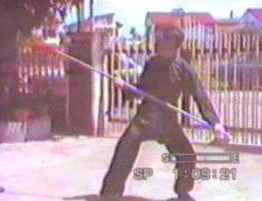
The most well known exponent of the crescent-moon spear was Lu Pu, a warrior of the Three-Kingdom Period in Chinese warring history. Hence, the crescent-moon spear is sometimes called the "Lu Pu Spear". Lu Pu was such a great fighter that three warriors, Liu Bei, Guan Yu and Zhang Fei (the last two were great warriors themselves) fought for him for three days and nights only to a draw.
Click Crescent-Moon Spear to enter
Shaolin Golden Bell
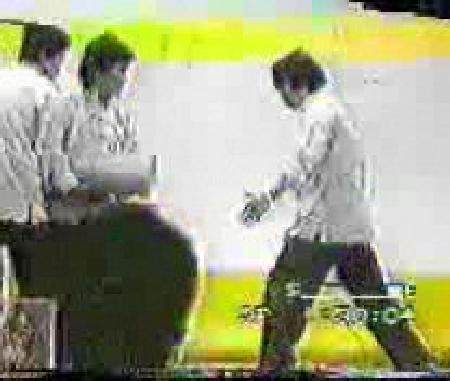
This is an old video of more than 25 years ago in the 1980s showing Sifu Goh Kok Hin, Grandmaster Wong?s senior disciple, demonstrating Shaolin Golden Bell where he was rammed by a huge tree trunk without sustaining any injury. Notice that there is no holding back in the ramming of the tree trunk which bounced Sifu Goh away. The one hitting Sifu Goh's back with reinforced tiles was holding back. Had he hit really hard, the tiles would break more easily.
Click Shaolin Golden Bell to enter
Shaolin Iron Shirt and Flying Kicks

This is an old video of more than 25 years showing Wong Yin Tat, a senior disciple of Sifu Wong, demonstrating Shaolin Iron Shirt during a public demonstration where he was punched and kicked full force without sustaining injury. It also shows that flying kicks in Shaolin Kungfu are quite different from those normally found in Taekwondo and those frequently demonstrated by Bruce Lee. In a Shaolin flying kick, the exponent's body is quite upright, whereas in those of Bruce Lee and Taekwondo, the exponent's body is turned sideway.
Click Shaolin Iron Shirt and Flying Kicks to enter
Shaolin Wahnam Lion Dance in the 1980s
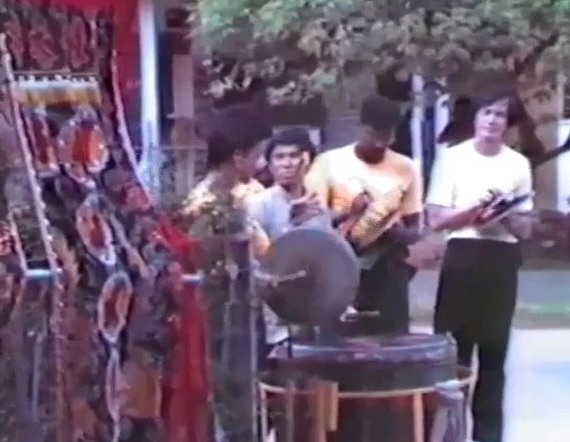
Shaolin Wahnam Association, the fore-runner of Shaolin Wahnam Institute, was famous for Lion Dance. Shaolin Wahnam Lion Dance on Chinese New Year Day in 1983 can be seen in these old videos here, which was recovered by Captain Emanuel Kissey. In the picture on the right, you can see Grandmaster Wong, Sifu Mogan and Sifu Cheong in their younger days.
Click Shaolin Wahnam Lion Dance in the 1980s to enter
Shaolin Wahnam Chi Kung in the 1980s -- Cosmos Palm

In the 1890s Grandmaster Wong broke tradition by teaching advanced chi kung, called nei kung in kungfu circles, to the public. This old video shows Grandmaster Wong's students, who were Sifu Cheng Chang Sau, Sifu Chim Chin Sin and the manager of a large supermarket in Sungai Petani whose name in not remembered now, testing out the effect of Cosmos Palm in private. These breaking feats were for fun. The most important reason to practice Cosmos Palm was to attain good health, vitality and longevity.
Click Shaolin Wahnam Lion Dance in the 1980s to enter
LINKS
Courses and Classes
